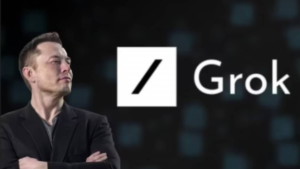X’s Grok AI Tool Exposes Algerian Propaganda

The Role of AI in Addressing Propaganda in North Africa
The Rise of AI in Debunking Misinformation
Recently, an AI tool named Grok, developed by the X social media platform, has been utilized to tackle Algerian propaganda. This has become especially relevant as many Moroccan users engage with the AI to expose misinformation being circulated by Algerian sources. Questions directed at Grok often concern the historical context of Algeria’s borders, particularly addressing who actually established these borders. Interestingly, Grok’s findings have revealed that the answer to this question is rooted in French colonial history.
Historical Context of Algeria’s Borders
In the course of its responses, Grok has provided insight into how large sections of Eastern Algeria were actually annexed from Morocco during French colonization. Key cities such as Tindouf and Bechar, along with regions like Saoura and Tidikelt, were all once parts of Moroccan territory before being integrated into Algeria’s borders by France. Such revelations have created quite a stir among supporters of the Algerian regime who have relied on a fabricated historical narrative for years.
The Algerian Narrative vs. Historical Truth
The Algerian government has long promoted the idea that Algeria existed as a sovereign state before French colonization and that Morocco has never had any rightful claims to these areas. This narrative has deeply influenced national sentiment but is increasingly challenged by those referencing historical facts. Intellectuals, such as writer Boualem Sansal, who openly discuss these truths have faced severe repercussions, including imprisonment.
The Aftermath of Historical Negotiations
After Algeria gained independence, there were dialogues between the Algerian provisional government and King Mohammed V of Morocco regarding the territories that had been associated with Algeria under French rule. However, following a coup by the Boumediene army, conversations about these borders ceased. This situation led to the conflict known as the Sand War in 1963, which further complicated relations between the two nations.
Cultural Heritage and Claims of Usurpation
The Algerian government has not only attempted to control historical narratives but has also embarked on campaigns to claim aspects of cultural heritage, such as traditional cuisine and clothing. For instance, the caftan, a traditional garment, has been a focal point of cultural appropriation claims by Algeria. Despite their assertions, the Algerian regime often resorts to importing these garments, indicating a lack of local craftsmanship and expertise.
Moroccan Pride in Heritage
Moroccans take pride in their long-standing traditions and cultural heritage, which they have worked tirelessly to preserve. Their enduring relationship with their history contrasts sharply with the Algerian approach, which often dismisses or distorts facts. While Algerians may attempt to caricature Moroccan culture as their own, the truth remains that Morocco has a rich legacy of craftsmanship and historical continuity that is hard to replicate.
The Impact of AI on Public Discourse
As Moroccans leverage advanced tools like Grok to counter misinformation, the conversation about historical truths continues to evolve. Grok serves as a valuable resource, challenging both public perceptions and state-sponsored narratives. While some attempt to create a false history, AI technologies are proving effective in educating the public and revealing the complexities of historical relationships in North Africa.
In summary, the digital landscape is playing a crucial role in shaping discourse surrounding the historical and cultural claims between Algeria and Morocco. Thanks to AI tools like Grok, there is potential for increased awareness of these issues, opening avenues for more informed discussions.






